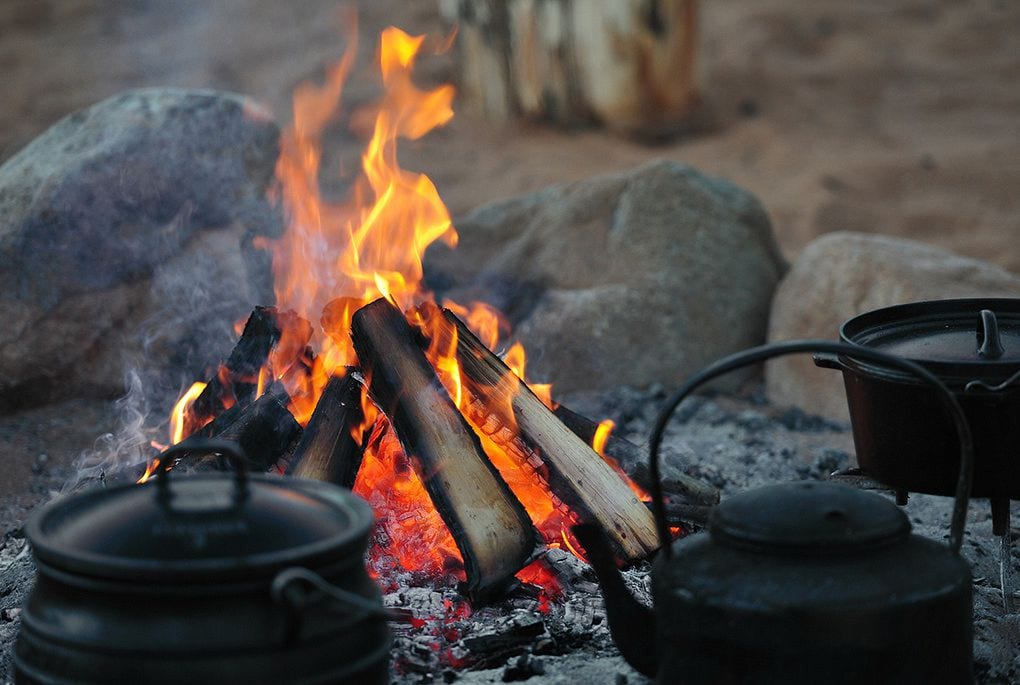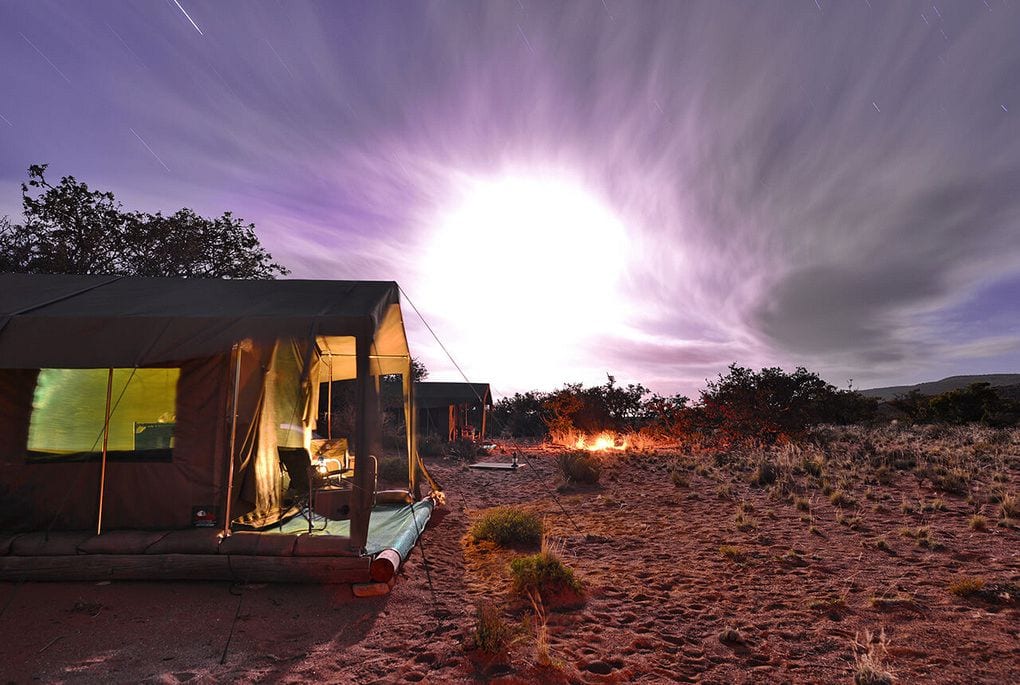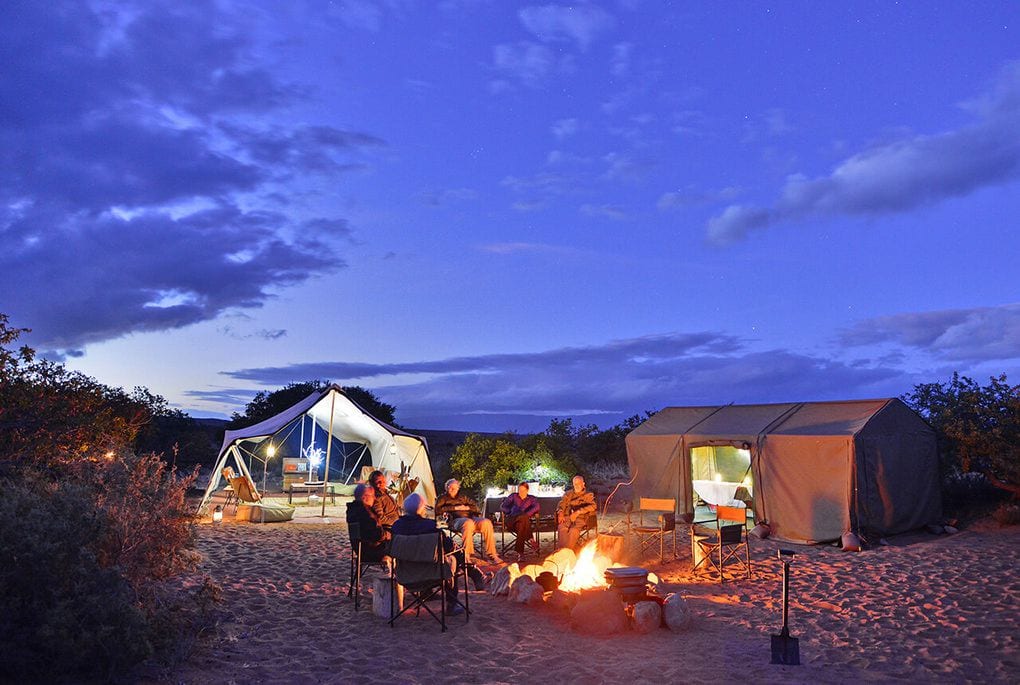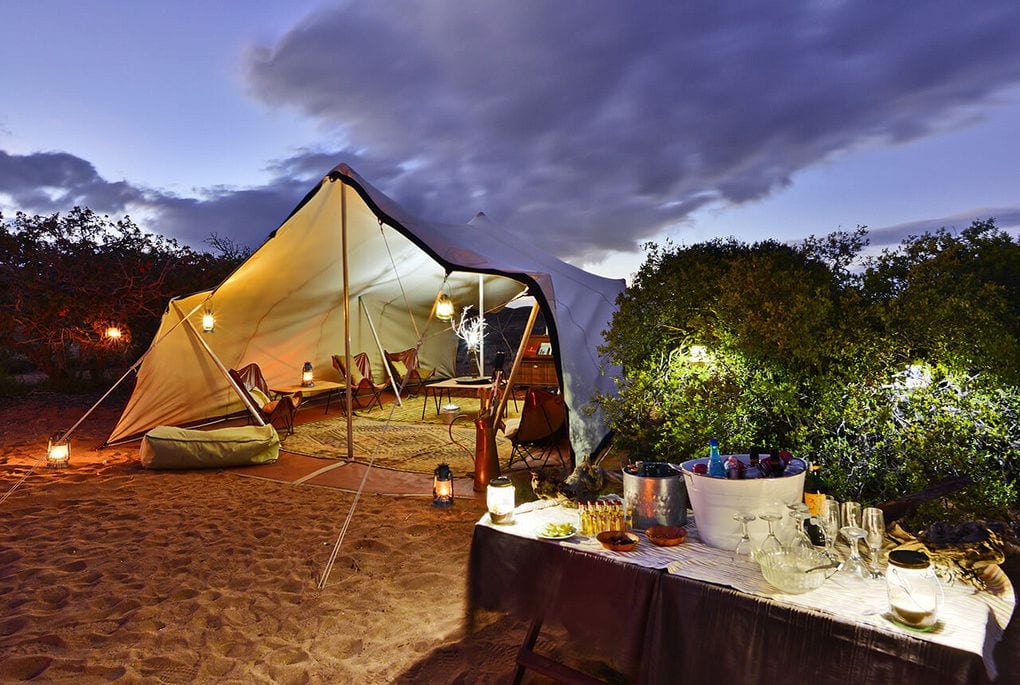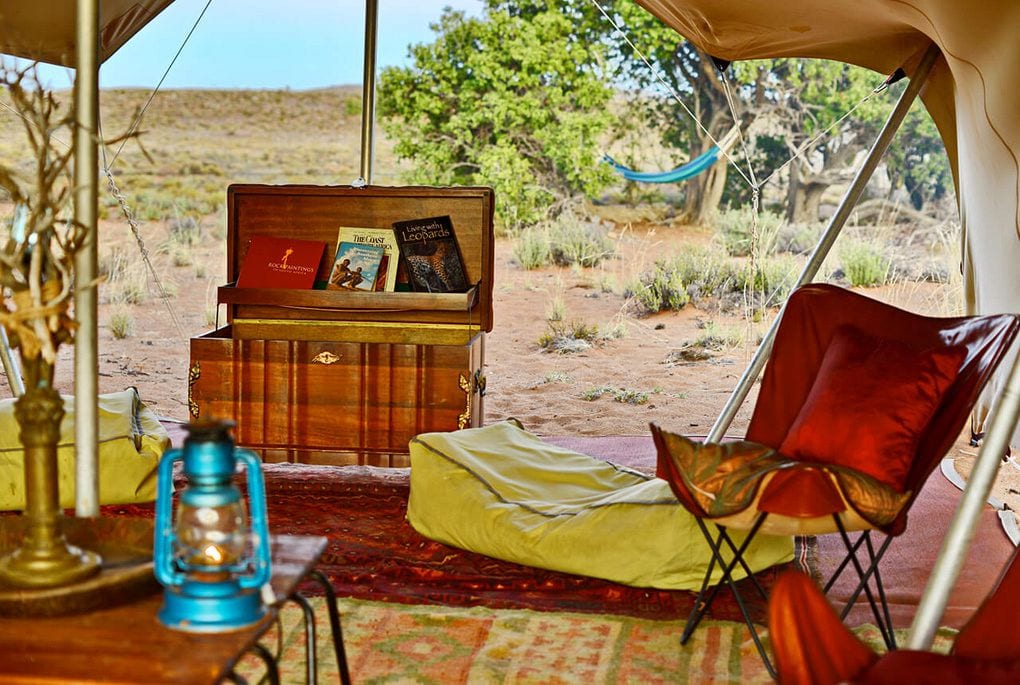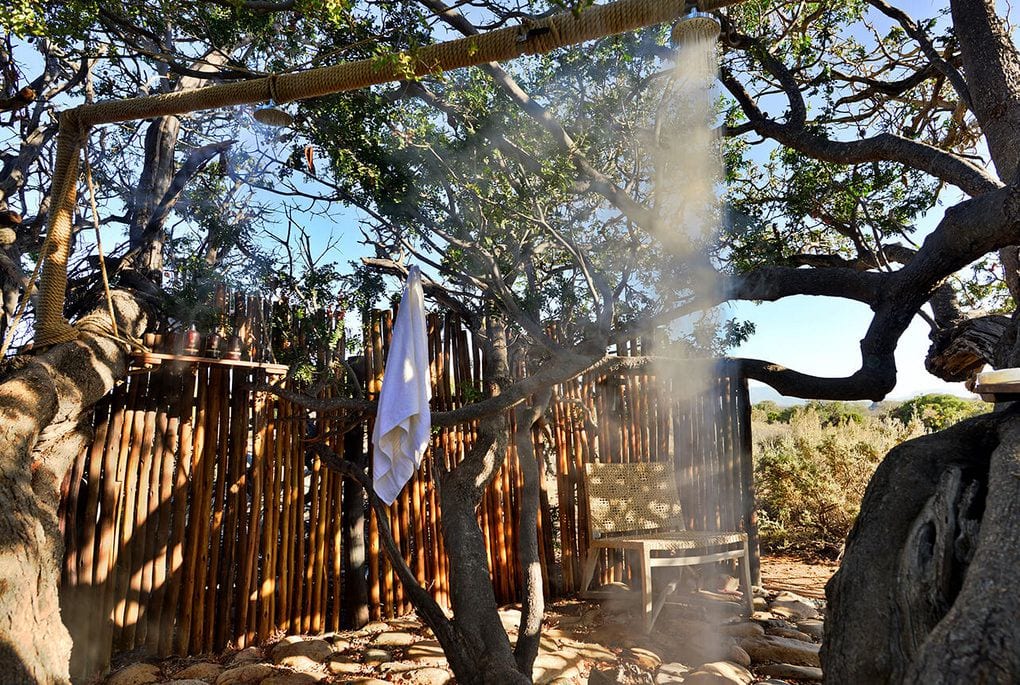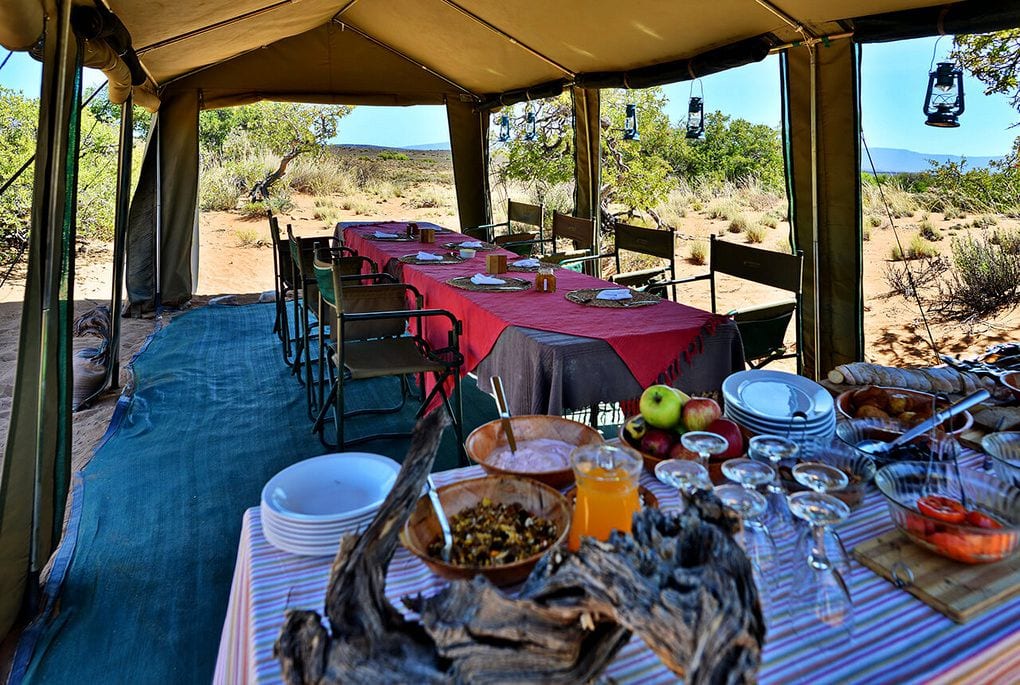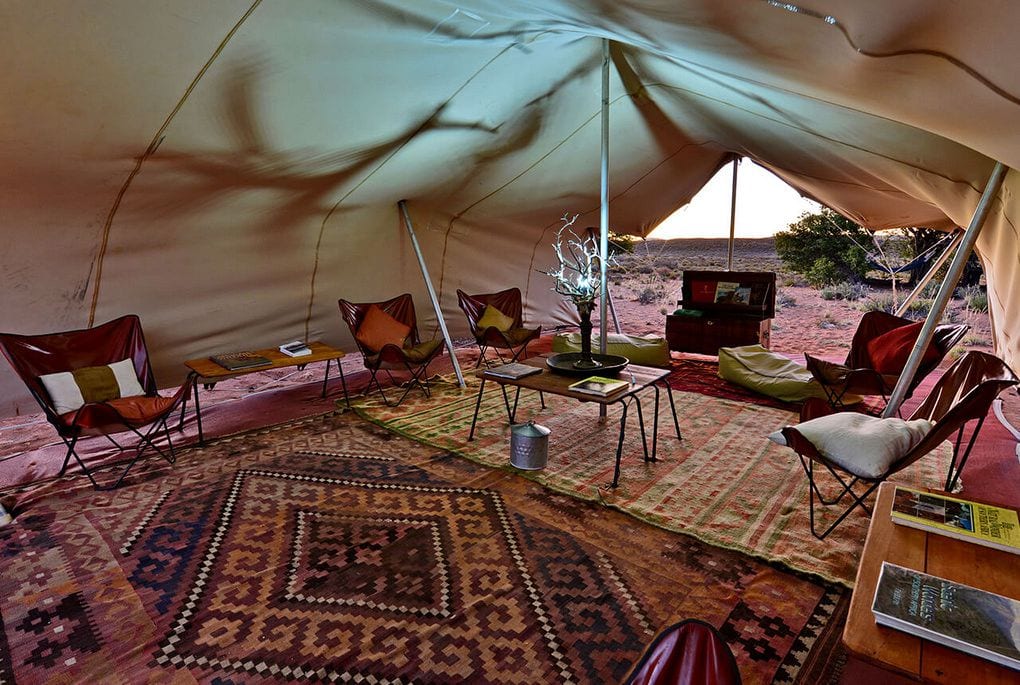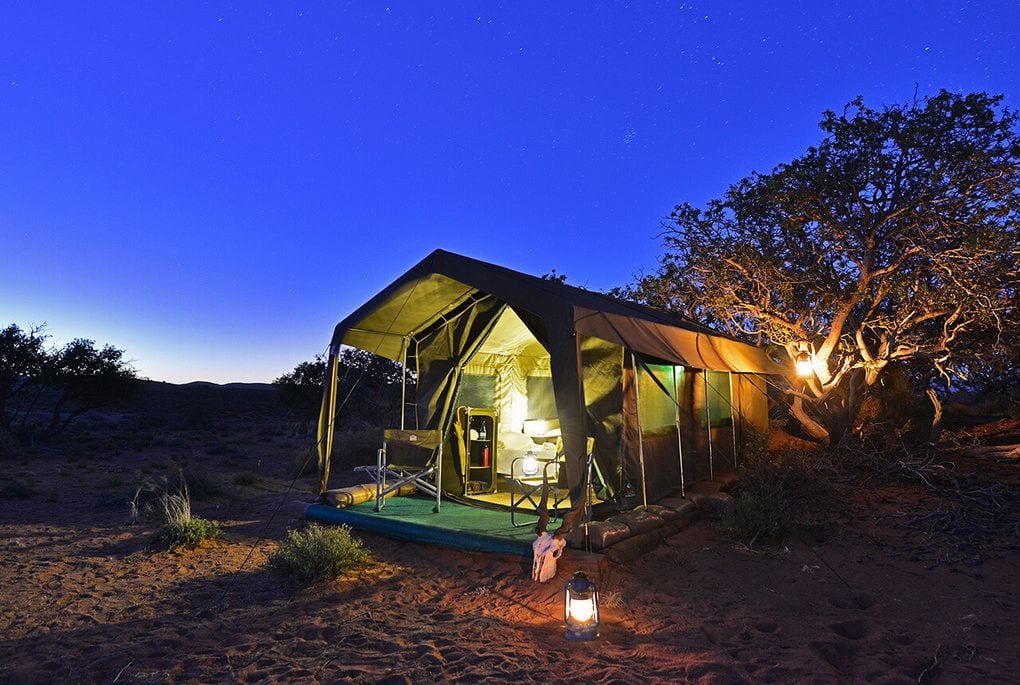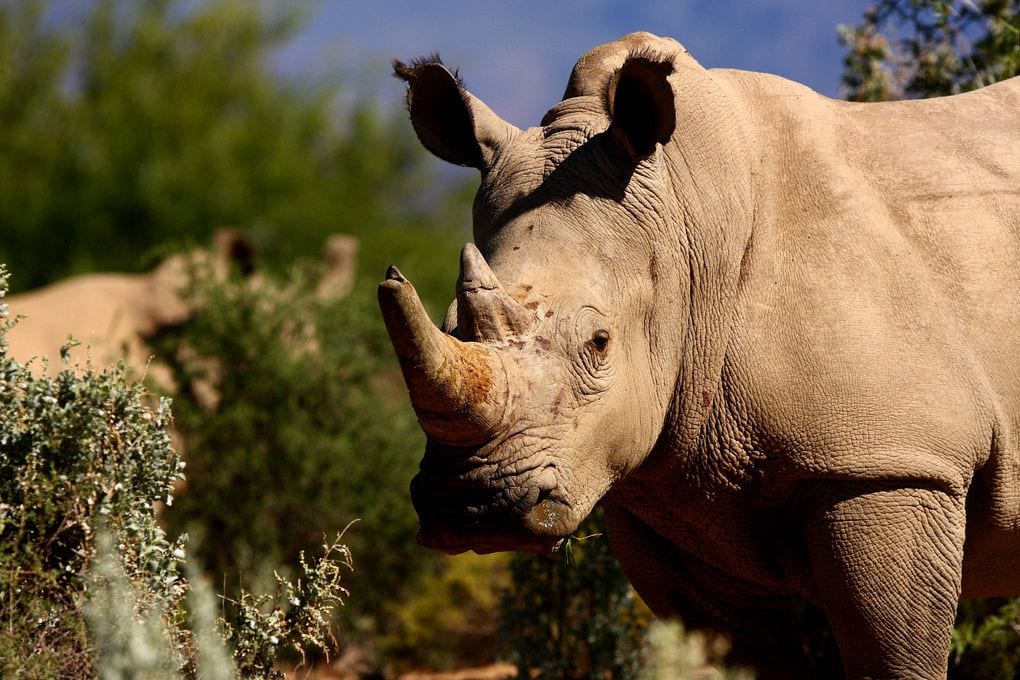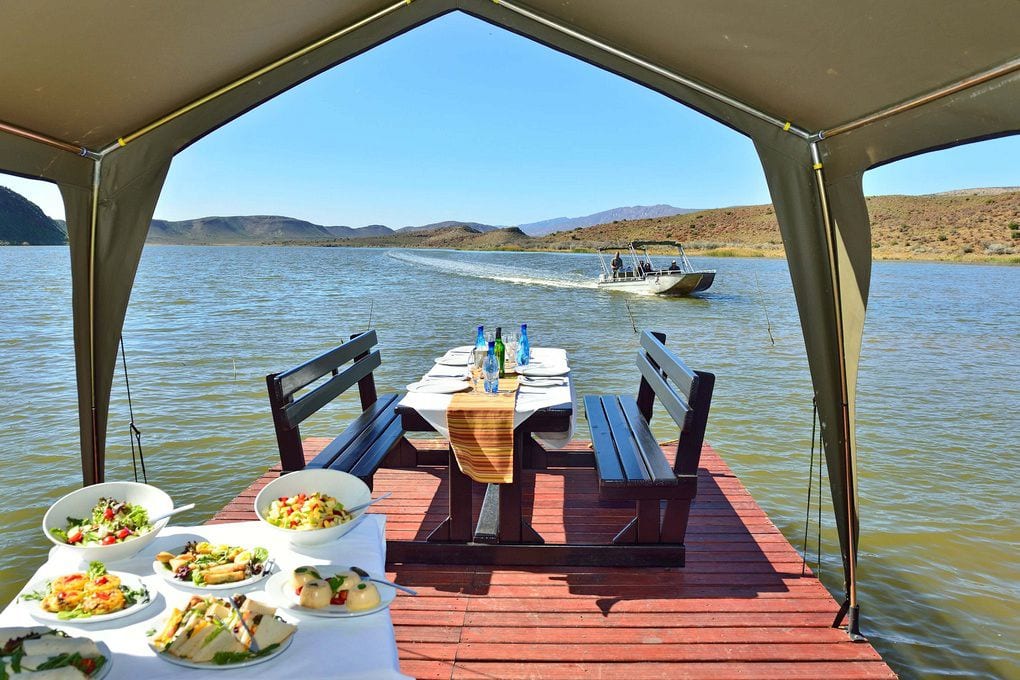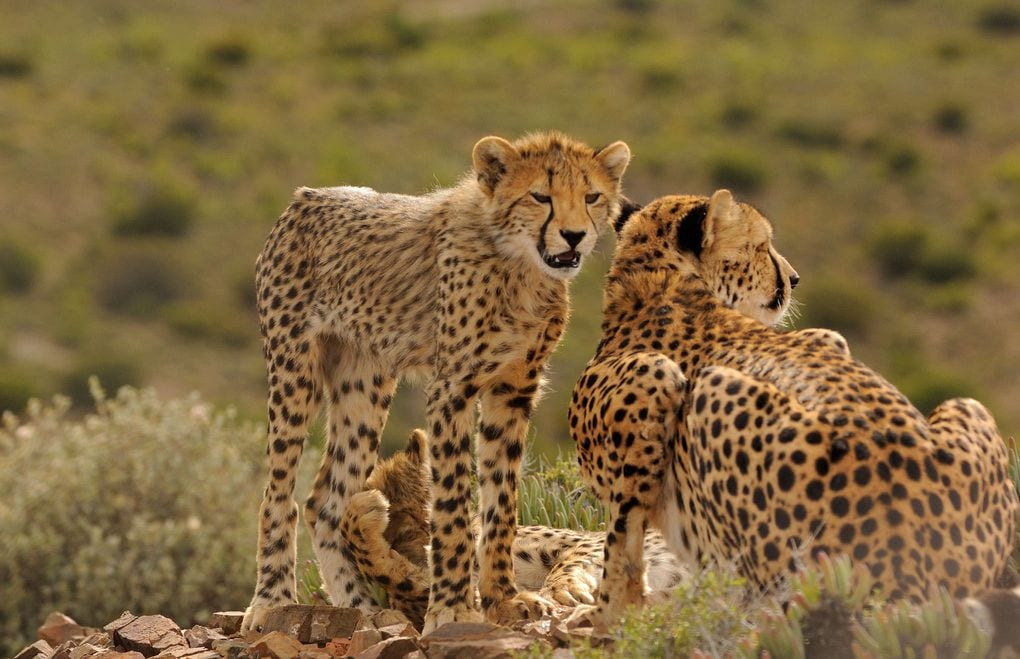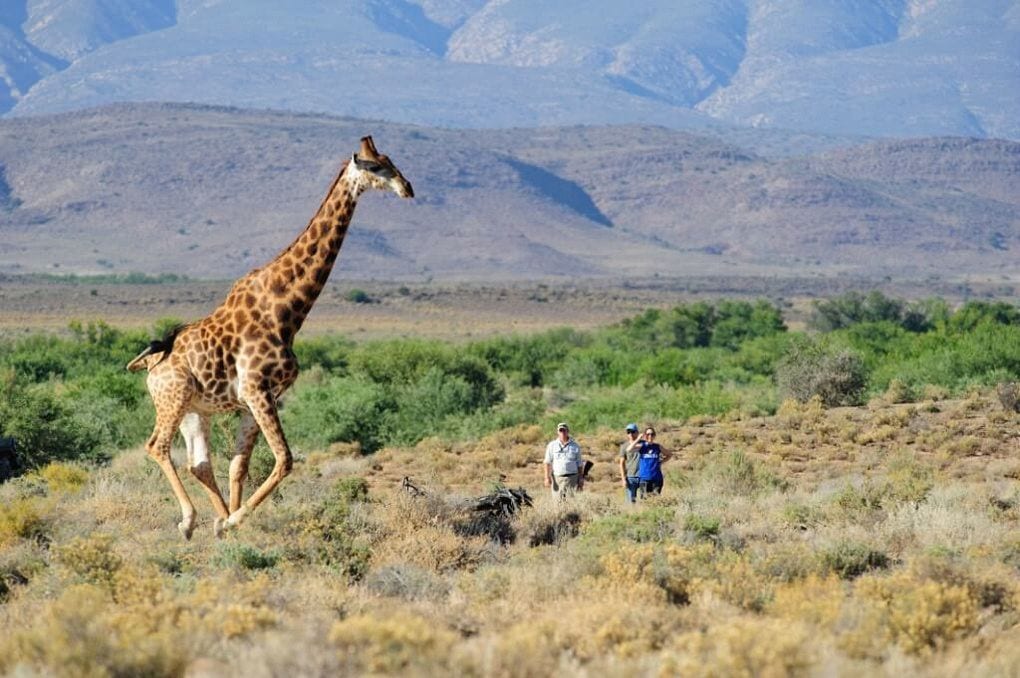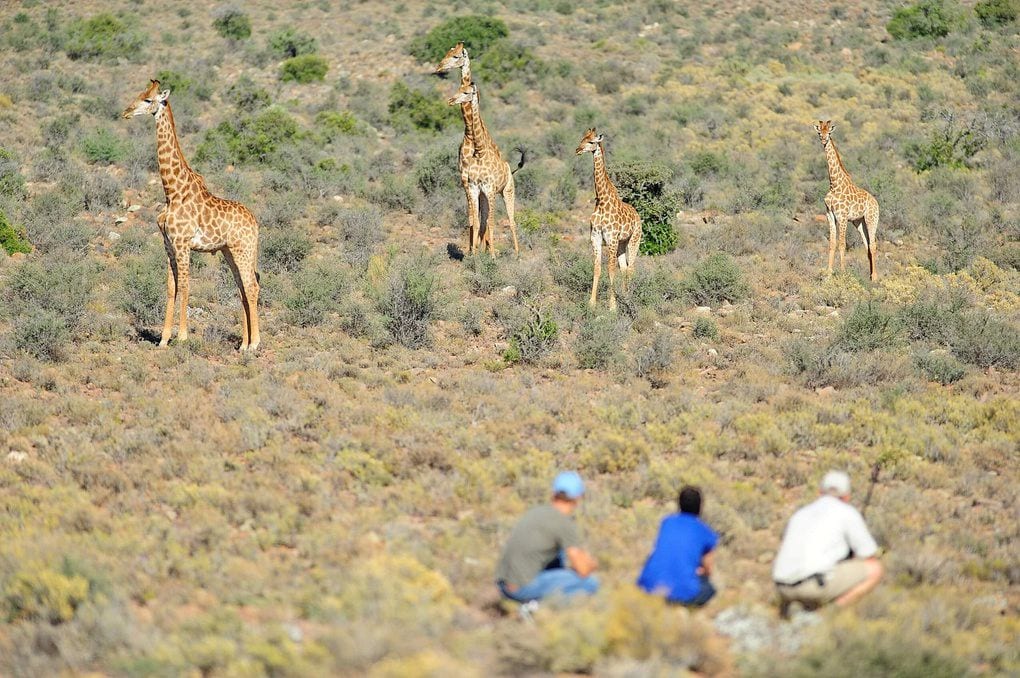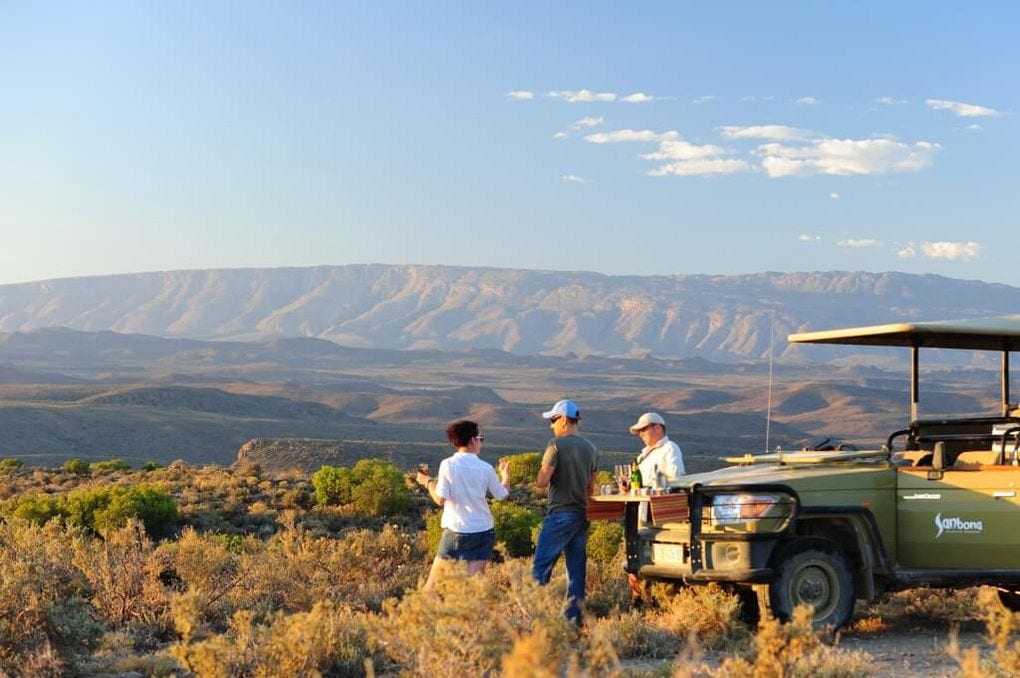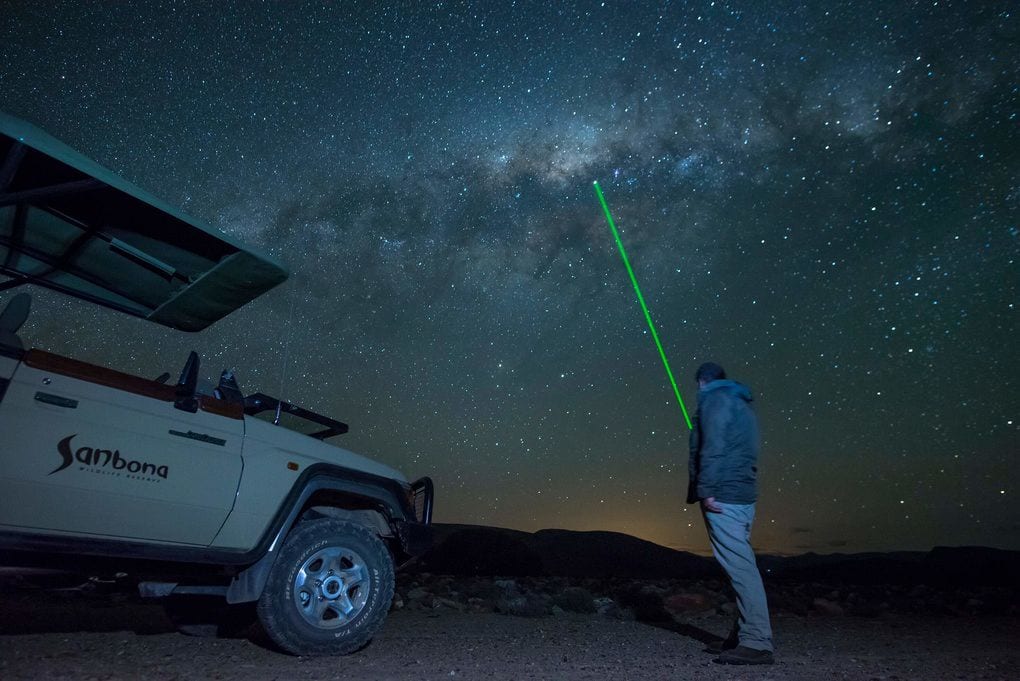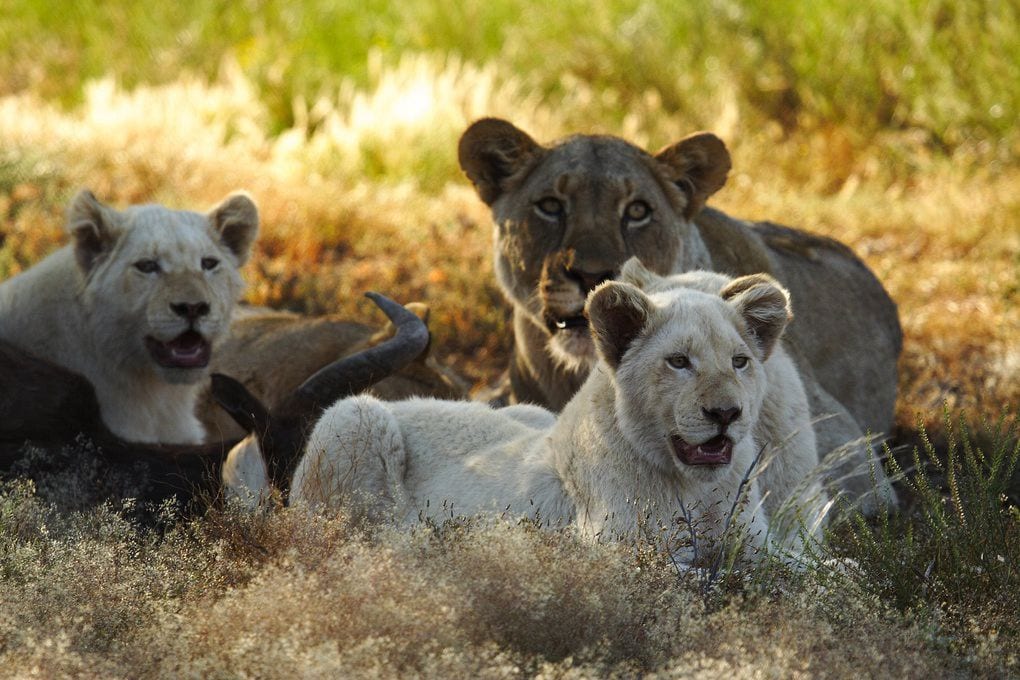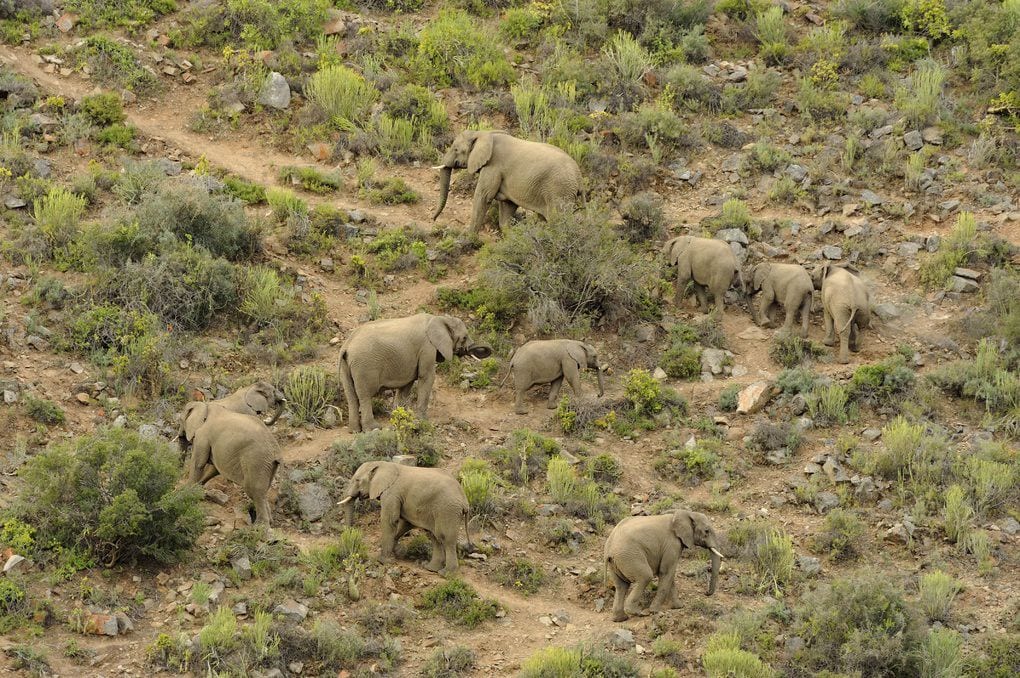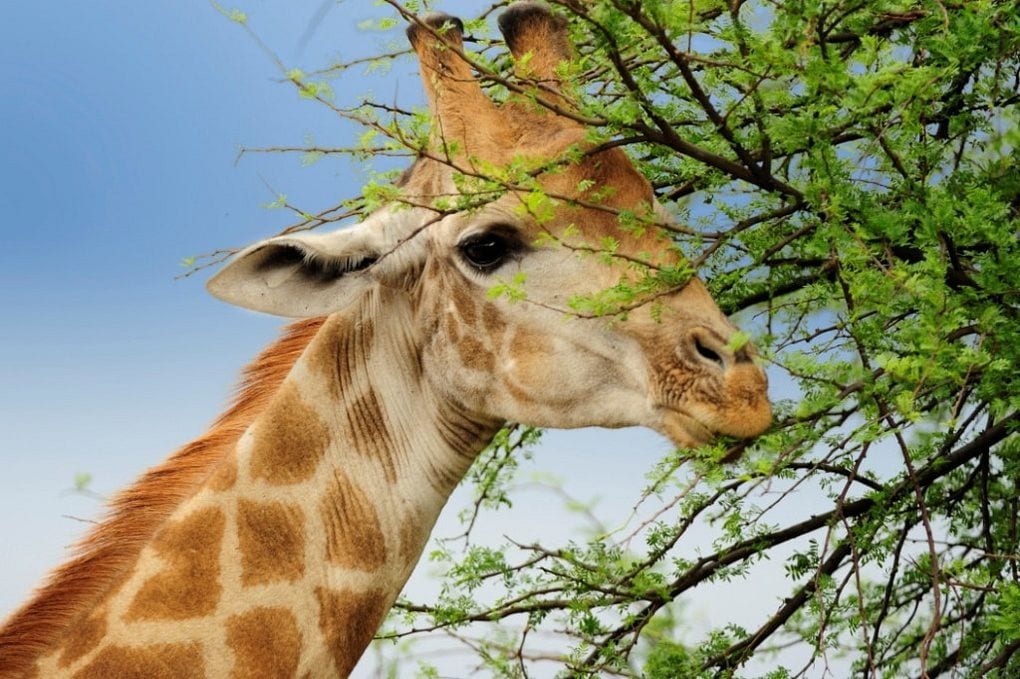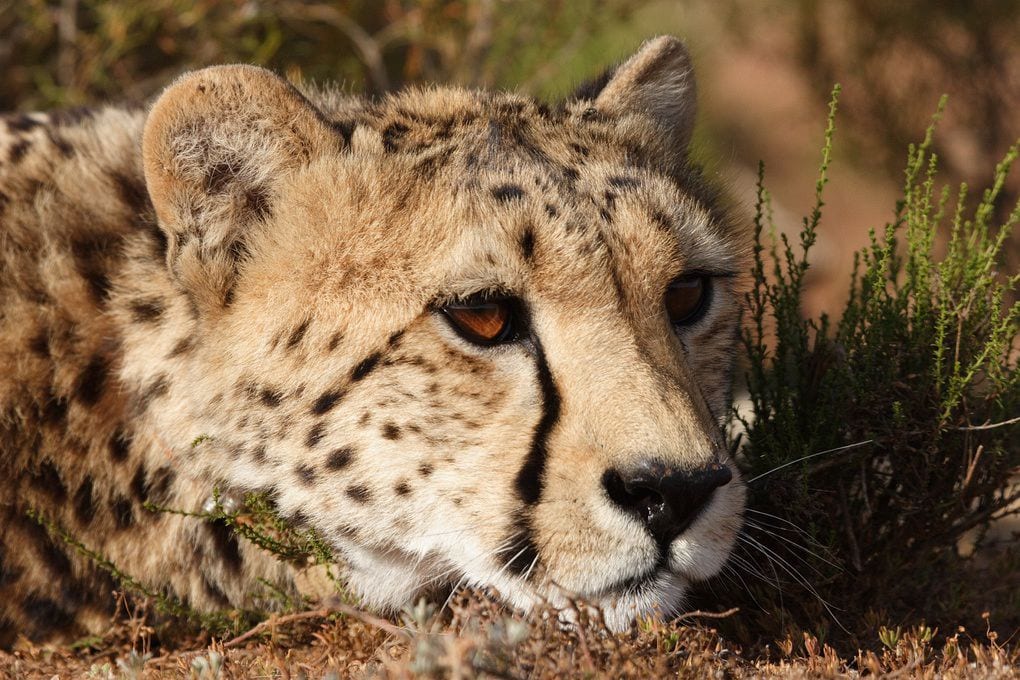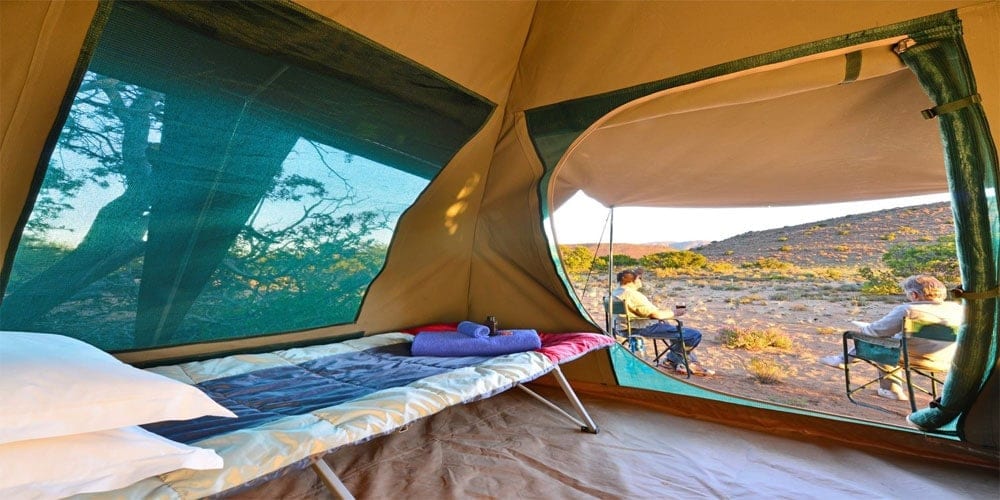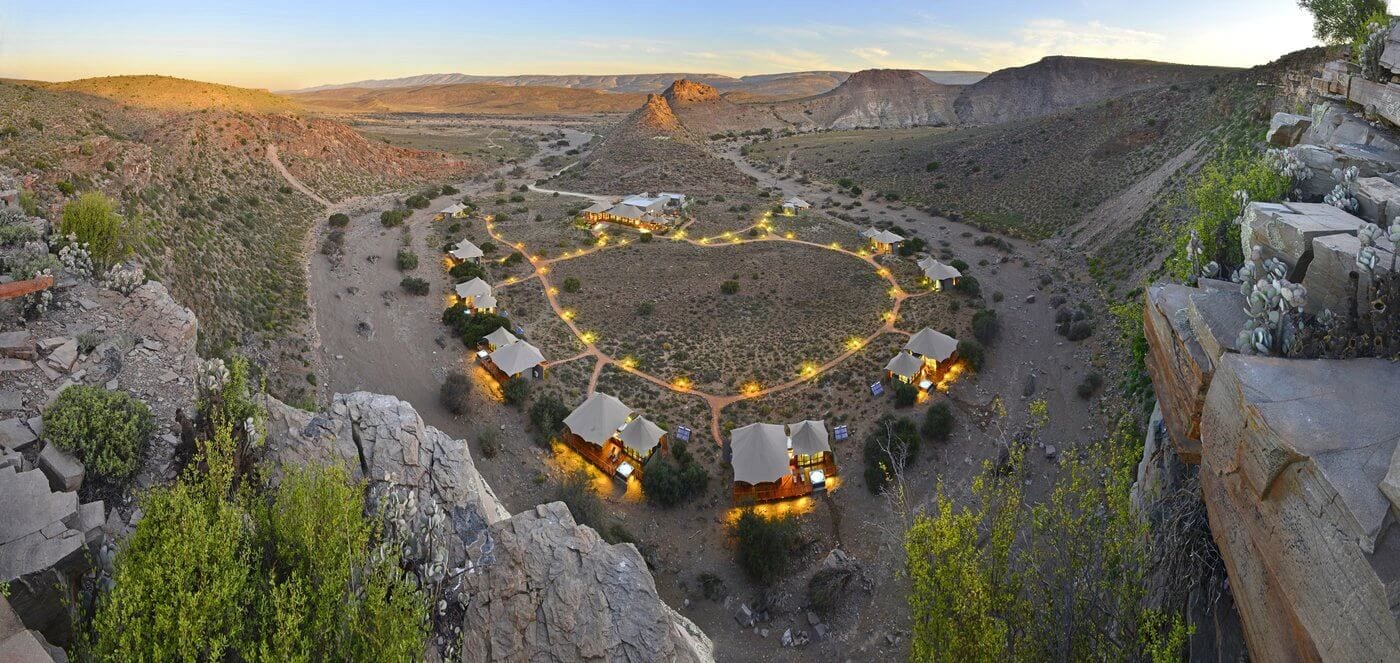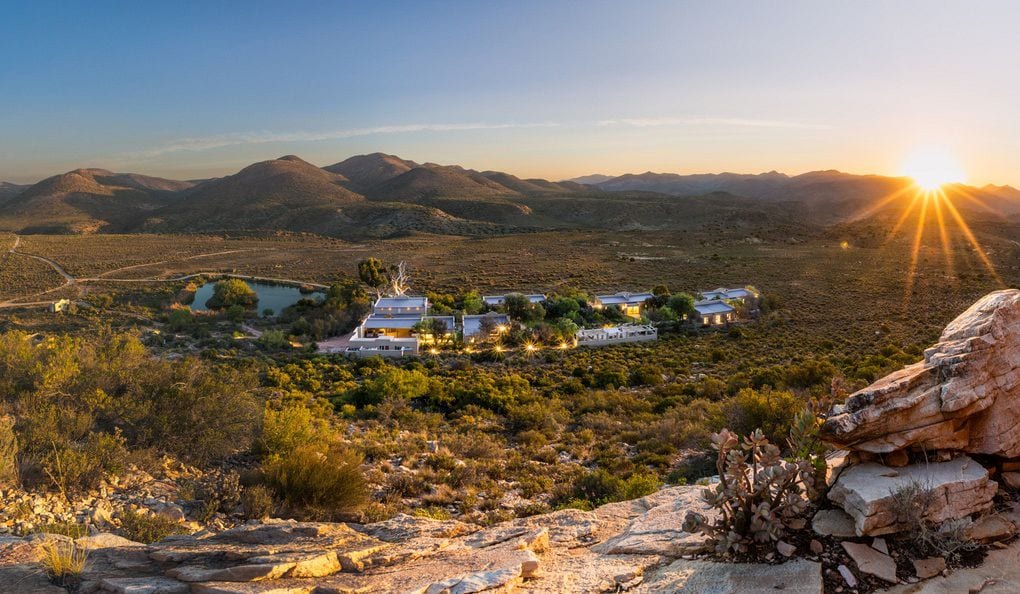Explorer Camp
Sanbona Wildlife Reserve, R62, Montagu, South Africa
ZAR 5,950
per adult sharing per nightOverview
A guided walking experience exploring the bush.
This seasonal camp offers adventurous guests an authentic walking experience to explore the Karoo while sleeping in luxury tents and enjoying evenings around a campfire. The camp is located along a beautifully shaded riverbed and qualified guides enhance birding, cultural and natural history experiences with opportunities to encounter the Big 5. The Explorer Camp operates during the summer months (October – April) and each wilderness trail takes two days to complete, with departures each Friday.
Regretfully, no persons younger than 16 years are able to participate in the wilderness trail walks. Restrictions apply to persons over 60 years.
Gallery
Additional Details
The Explorer Camp offers three canvas tents that can sleep a maximum of two people each. The tents are placed in fairly close proximity to one another, without encroaching on the privacy of the other tents. Wild animals are able to move through the camp at any time and although all safety precautions have been followed in setting up the camp; this remains a reality.
Each tent includes the following amenities:
- 2 x stretcher beds with sheets, duvets, and pillows
- En-suite facilities are available on request with bucket shower, chemical toilet, and canvas basin.
- 1 x Hammock nestled away under an ancient Schotia tree
- Guest amenities include insect repellent, towels, sanitary bags, as well as biodegradable shower gel and shampoo.
The following program is a guideline as all timings are subject to discussions upon arrival.
Day 1 – Arrival at Sanbona (Friday)
Day 2 – (Saturday)
- Early wake up can be expected due to the nature of walking and temperatures during summer.
- Enjoy muffins, fruit sticks, biscuits, tea and coffee in the lap of Mother Nature.
- Morning walk commences and can last up to 4 hours, depending on temperatures.
- Enjoy a hearty brunch upon return to camp.
- Relax in your hammock, catch up on some rest, or simply adore the wild.
- A variety of light sandwiches with fresh fruits will be enjoyed for lunch.
- Afternoon hike.
- Sundowner drinks are enjoyed in the bush, close to camp.
- Enjoy dinner and an evening around the campfire.
Day 3 – Day of Departure (Sunday)
- Early wake up can be expected.
- Enjoy breakfast in the bush before departing at 10h00 in order to meet up with the transfer from one of Sanbona’s luxury lodges to be back at the Welcome Lounge by 12h30.
- A brief walk on the morning of departure is optional.
Transfers to Sanbona can be arranged with reservations on request at an additional cost. All transfers are handled by accredited car hire and charter companies and must be arranged prior to arrival.
Explorer guests are met at the Welcome Lounge, 15km from the main gate and taken to the lodge in order to meet their specialist guide. A complimentary transfer from the lounge to the different lodges is available on request and must be booked at least 72 hours in advance.
There is also secure parking available for vehicles at the Welcoming Lounge for guests who travel to the reserve on their own.
- Clothing in neutral colours that is light in weight, but warm – Bright coloured clothing must be avoided as this can deter wildlife, you should include the following when packing your bag:
- 3 x Shirts
- 3 x Shorts
- 2 x pants (long)
- 1 x warm jersey or jacket as the evenings can get cold
- Hiking or trail shoes
- Sandals for showering
- Sun block
- Hat
- Camera
- Binoculars
- Sanbona Explorer Camp is sold as a two-night walking trail package; therefore two (2) nights are automatically booked and payable at the time of reserving this unique experience.
- The Explorer Camp operates during the summer months with the first trail in October and the last trail at the end of April.
- Each trail is 2 nights with a set arrival of Friday of the week.
- The walking trails are hosted and guided by an armed qualified walking guide.
- Distances walked vary each day but can last up to 4 hours.
- A game viewing vehicle remains in camp and will be utilised depending on where guests walk that
day, the trail may start from camp or depart camp by vehicle to visit another area of the reserve. - We regret that no persons younger than 16 years will be able to participate.
- Participants older than 60 years will be required to provide a medical clearance certificate in order to
participate. - Please ask your reservations consultant for more information regarding a third night at any our five
star, luxury lodges.
Map & Directions
Sanbona Wildlife Reserve, R62, Montagu, South Africa
From Cape Town
Get Directions via Google Maps
Approximately 270 km from Cape Town.
- Take the N1 highway in the direction of Paarl – There is a tollgate on this road, just before the Huguenot Tunnel.
- Once through the tunnel, take the second turnoff to the right into Worcester (R60) – Follow the signs towards Robertson.
- Drive through Robertson, still on the R60 into Ashton.
- Proceed through Ashton – the R60 becomes the R62.
- Carry on through Kogmanskloof and Montagu.
- About 43km from Montagu, turn left at ‘Die Vlakte’ and Sanbona Wildlife Reserve sign.
- Continue for 7km to reach the main entrance.
- Proceed for another 15km to reach the Welcome Lounge.
Please be advised that the road changes from tar to gravel and the recommended speed limit from there until the Main Gate is 60 km/h. The main entrance to Sanbona Wildlife Reserve is 7 km. Once through the Main Gate, the speed limit is 40km/h.
From Oudtshoorn
Get Directions via Google Maps
- Follow Route 62 for 175km via Calitzdorp and Ladismith, towards Barrydale.
- From Barrydale, continue on Route 62 towards Montagu for approximately 22km.
- Turn right at ‘Die Vlakte’ and Sanbona Wildlife Reserve signs.
- Continue for 7km to reach the main entrance.
- Proceed for another 15km to reach the Welcome Lounge.
Welcome Lounge
Guests with suitable or 4×4 vehicles can drive themselves to their lodge from the main gate.
If you’re driving to your lodge yourself, it’s important to take note of the following:
- Please follow the relevant signs in the reserve.
- The recommended speed limit is 40km per hour.
- Do not exit your vehicle as predators roam free.
- The main gate closes at 18h00, should your arrival time be later, please advise prior to arrival in order to make arrangements.
Arriving guests:
Pick up from welcome lounge at 12h30 – arrive at Tilney 13h15, at Gondwana 13h25, arrive at Dwyka 13h35.
Pick up from welcome lounge AT 16h00 – arrive at Tilney 16h45, arrive at Gondwana 16h55, arrive at Dwyka 17h05 (these guests will not be able to join the afternoon game drive.
Departing Guests:
- Pick-up from Dwyka Tented Lodge at 11h00
- Pick-up from Gondwana Lodge at 11h20
- Pick-up from Tilney Manor at 11h35
- Arrive at the welcome lounge at 12h15
Video
Activities
Bird Watching
Sanbona Wildlife Reserve is home to more than 200 species of birds, a delight for anyone that’s interested in birdwatching. In fact, the banks of the Bellair Dam alone are home to more than 40 species of birdlife, making it a hotspot of avian activity.
Viewing Delights
Pack your binoculars, notepads, and field guides because there is a healthy population of birds to be seen. And due to the unobtrusiveness of Sanbona Wildlife Reserve, all of them are at ease, which makes for pleasurable viewings and easy sightings.
Whether you’re on a game drive, boat safari, or simply relaxing at one of our luxury lounges, you can expect to see many rare and beautiful birds, such as:
Cinnamon-breasted Warblers
Booted Eagles
Southern Grey Tit
Namaqua Sandgrouse
Black-winged Stilts
Birds of a Feather
The Little Karoo is a well-known birding destination. With the contrast of vast plains, mountains, water-courses, and drainage lines throughout the area, it makes nesting for a variety of species easy.
You can expect to catch a glimpse of birds of prey, such as the Jackal Buzzard or Little Brown Jobs like the Chat Flycatcher. You might even find Chestnut-vented Tit Babblers, mingling with doves, mousebirds, and sparrows.
Through our birdwatching activities, you’ll certainly learn about and experience the wonder that is nature. Some species, like the Namaqua Sandgrouse, travel up to 80km in search of water. They collect droplets of water in their breast feathers, and fly back to their nests to deliver it to their chicks.
Best of all, whether you love the larger species like the Ludwigs Bustard, or you’re simply delighted by the more delicate ones like the Black-headed Canary, you and your family are in for a treat.
Boat Safaris
Let yourself and your family or travelling companions experience Sanbona Wildlife Reserve from a different angle. With the vast and impressive Bellair Dam situated on the property, guests can enjoy our boat safari activities, from the comfort of our spectacular vessel, The Peregrine. This tour is subject to water levels in the Bellair Dam as Sanbona is situated in a water-scarce area.
Waterways Tour
Named after a bird of prey, the Peregrine Falcon, this boat embarks on water safaris that takes you into, what was once, uncharted territory. Through these guided tours, 12 guests are seated comfortably as the boat takes you on either a sunrise or sunset cruise, weather permitting. These are the best times of the day to enjoy a safari,as this is when the animals are at their most active.
Additionally, guests can gain a new perspective of the reserve and potentially see:
- The Big 5
- Hippos
- A variety of birdlife.
Best of all, if you’re travelling in a larger party for work or leisure, you can book a Peregrine boat safari exclusively, at an additional cost.
The Peregrine is able to navigate through even shallow waters and offers access to most areas of the dam.
Built almost 100 years ago, this dam is considered a bird watching haven as more than 40 species of birdlife flock here to nest, feed, and drink. Guests get a chance to see the newly built dam wall, and on a hot summer’s day, swim whilst enjoying vistas that are only found in the Karoo.
Additionally, our knowledgeable guides not only point out rare species of birds and identify calls, but they also share interesting and important information about the dam and the Reserve itself.
Flora & Fauna
There are over 600 types of flora within Sanbona Wildlife Reserve. Various species bloom at different times throughout the year, but, in this region, flowering occurs more prolifically between August and September.
Sanbona is at the forefront of an on-going conservation project that aims to restore the ecological balance in the area. Approximately half of the surrounding landscape used to be livestock and agricultural farms, which have since been removed which has allowed the various floral kingdoms that make up the reserve to flourish. Plant life that inhabits this region of the Western Cape includes Acacia Thickets, Renosterveld, Succulent Karoo and Central Mountain Fynbos. Species of succulents are especially varied and fascinating with names like Baby’s Bottoms, Ostrich Toes and Pig’s Ears.
As part of our conservation efforts, we have reintroduced animals that once roamed the area freely, but were eradicated due to farming. The Big 5 and various other species such as gemsbok, springbok, hartebeest, eland, kudu and zebra can now all be seen on Sanbona Wildlife Reserve.
Other animal species that continue to thrive thanks to the efforts of Sanbona include natural small game such as the:
- Jackal
- Caracal
- Duiker
- Aardwolf
- Aardvark
- Brown hyena
- Grey rhebok
- Steenbok
- Klipspringer
- Grysbok
A riverine rabbit population was discovered on Sanbona in 2006, and as these animals are only known to exist in the central Karoo, they are incredibly rare. Moreover, this species of rabbit is the 13th most endangered mammal in the world. Sanbona is currently only one of two protected areas that provide riverine rabbit populations with sufficient space and diversity for their ecological processes to function naturally.
Photography at Sanbona
Nestled just outside of the spectacular town of Montagu, Sanbona Wildlife Reserve offers exquisite landscapes, majestic rock formations and an abundance of animals, birdlife, flora and fauna to appease an array of tastes. Thus making this slice of the Western Cape region a photographer’s dream.
These natural endowments coupled with near perfect light conditions, enable photographers of all expertise the chance to capture wildlife scenes that surpass their expectations.
Whether you prefer photos of game and panoramic landscape shots or want to capture close-up details of the smaller species of insects and plant life on the reserve, your choices are endless.
So, when you’re on your game drive, nature walk, or water safari, be sure to bring your camera so that you don’t miss any magnificent photo opportunities.
Rock Art
Aside from the array of game and majestic landscapes, another of the exquisite attractions available at Sanbona Wildlife Reserve is the ancient rock art found here.
There are seven recorded sites throughout Sanbona. These rock art sites date back more than 3,500 years and depict the spiritual beliefs and lives of the San and the Khoi-Khoi people that lived in this area until 100 years ago.
Following History
The San were nomadic hunter-gatherers and the Khoi–Khoi were pastoral herders who owned livestock such as cattle and sheep. The rock art is a product of what the Shaman of both Khoi-Khoi and San people envisioned in their trances.
But, the paintings are very different from each other. The San paintings are more representative of animals, people, and beings and are done in a darker red colour due to the ochre they used.
Whereas the Khoi-Khoi paintings are more ‘orangey’ and symbolic in style. The paint was made from ochre, calcrete, animal blood, animal fat, plant sap, and ostrich eggs, which they ground to a paste.
Historic Rituals
During their travels, members of these groups would congregate around a communal fire, weaving stories and celebrating the gift of life while the Shaman would meditate in a trance through rhythmic dancing, singing, and clapping, receiving visions as guidance. This would ensure the wellbeing of the tribe, protecting them from evil and sickness, predicting the future, and praying for good hunting and rains.
It’s also during these rituals that certain animals such as the praying mantis and the eland were honoured and revered as they were considered to have great spiritual powers.
These trance experiences of the Shaman were depicted to the tribe in the form of the rock art seen today. The various sites were also very symbolic, as the rock face was seen as a portal between the different realms the Shaman had travelled through in his trance.
Preserving the Past
Some of the only evidence that remains of this way of life is depicted through this delicate rock art. This makes Sanbona Wildlife Reserve, not only a leading destination for an African experience, but a national treasure in terms of heritage.
Stargazing
One of the great wonders to experience at Sanbona Wildlife Reserve is the night sky. Free from light and city pollution, the Klein Karoo offers some of the finest stargazing in Southern Africa and is an ideal activity for all guests to enjoy.
Each lodge has a high-powered telescope and dedicated ranger who utilising a laser pointer guides you through the awe-inspiring constellations and planets.
Seasonal Sights
As part of the constellations on show, in summer, Orion can be seen alongside Taurus the bull, and the Seven Sisters. But, as winter comes around, Scorpius, with the red giant star Antares at its’ heart and the distinctive Southern Cross, come into view.
Experienced or professional astronomers can sit back and enjoy the neighbouring dwarf galaxies, also known as the large and small Magellanic Clouds. Other deep space features that can be viewed with the telescopes provided at each lodge include the Orion and Carina Nebulas, and not forgetting Tuc47, another brilliant star cluster.
A Night Under the Stars
Stargazing can be conducted at the lodges but can also be incorporated on night drives. Although the winter months may be colder, they offer even better viewing as heat and dust are greatly reduced in the atmosphere, offering a clearer view of the sky.
It’s the ideal activity for the whole family. Guides are happy to explain to younger guests the unique aspects of the Karoo sky, which is not only educational for them, but mom and dad might learn a thing or two as well. Stargazing can also be incorporated in the Kids on Safari programme.
Wilderness Walks
Take it all in when you visit Sanbona Wildlife Reserve. We encourage our guests to jump at the opportunity to discover everything the Little Karoo has to offer in terms of fauna, flora and majestic landscapes.
The entire reserve offers an array of nature walks, hiking and wilderness trails for you to explore. Well-informed and experienced rangers can indicate points of interest while divulging important and interesting information about the area.
With the variety of exquisite sites, animals and plants to see while on your excursion, choosing the right time of day is important. Larger and smaller animals alike are most active during the early mornings and early evenings. During the day you’re likely to catch a glimpse of an array of birdlife nesting, hunting or travelling through the area, with waterholes being the most prominent area.
Each adventure is appropriate for any fitness level, from easy walking tours to more advanced hiking trails.


